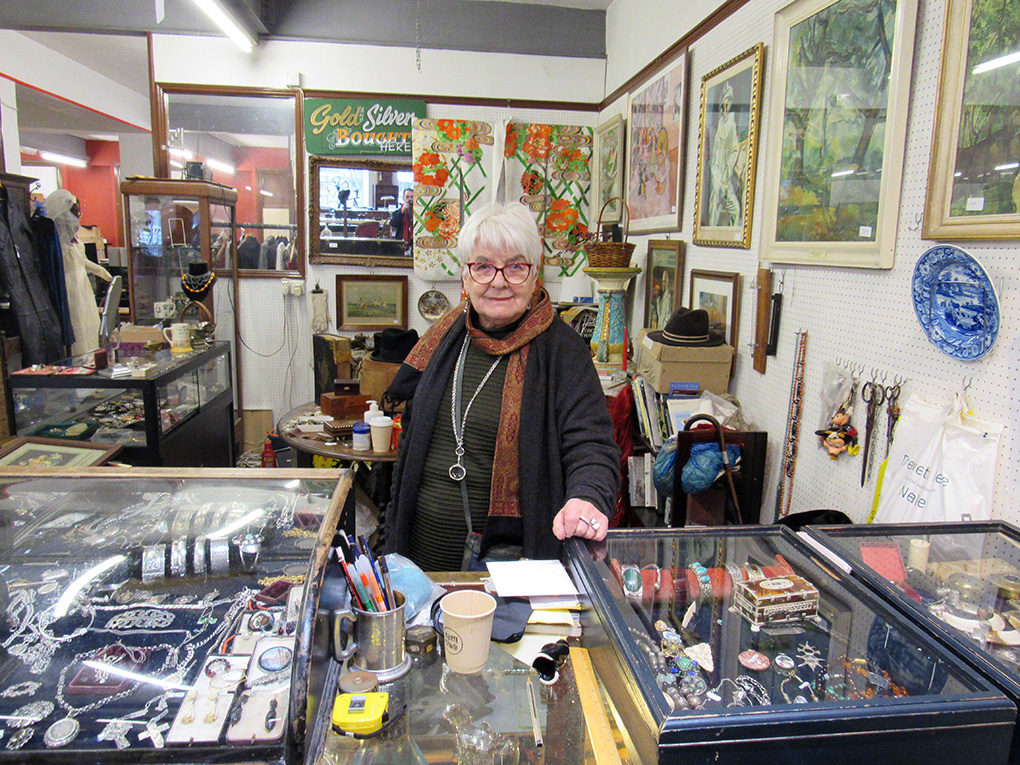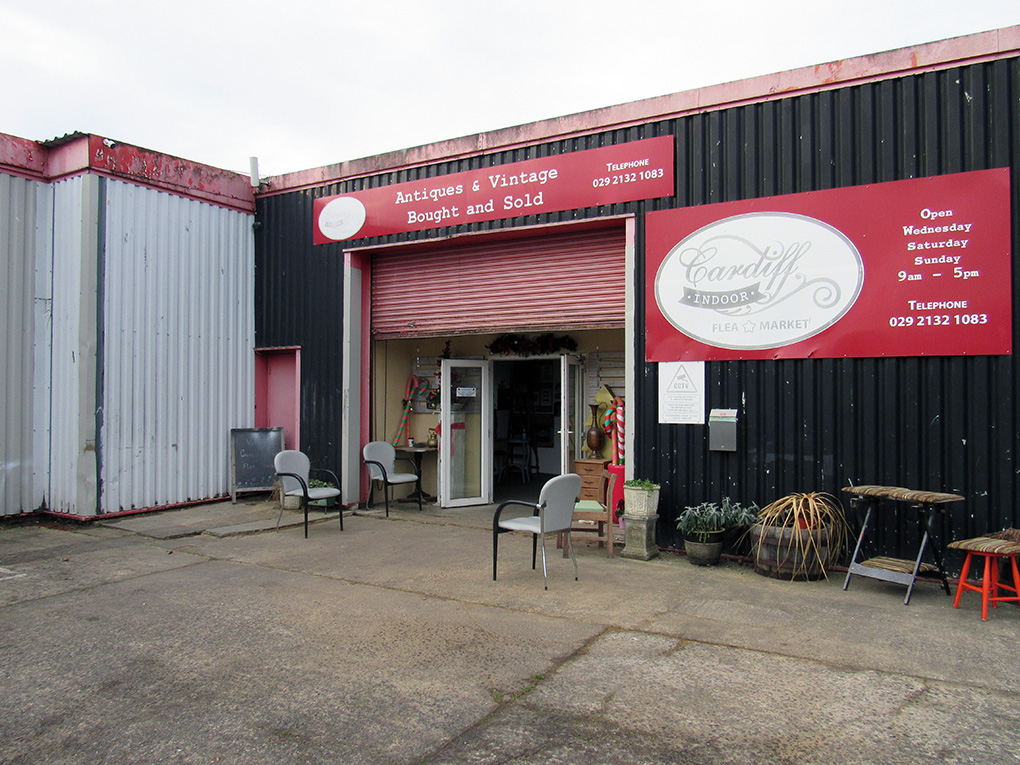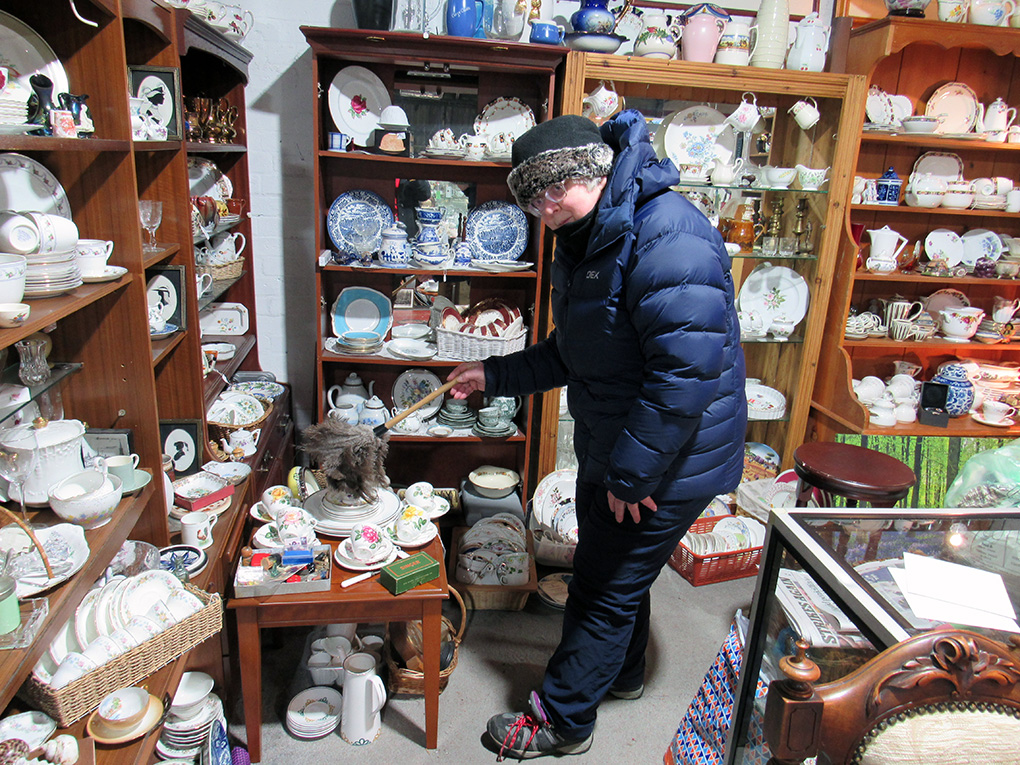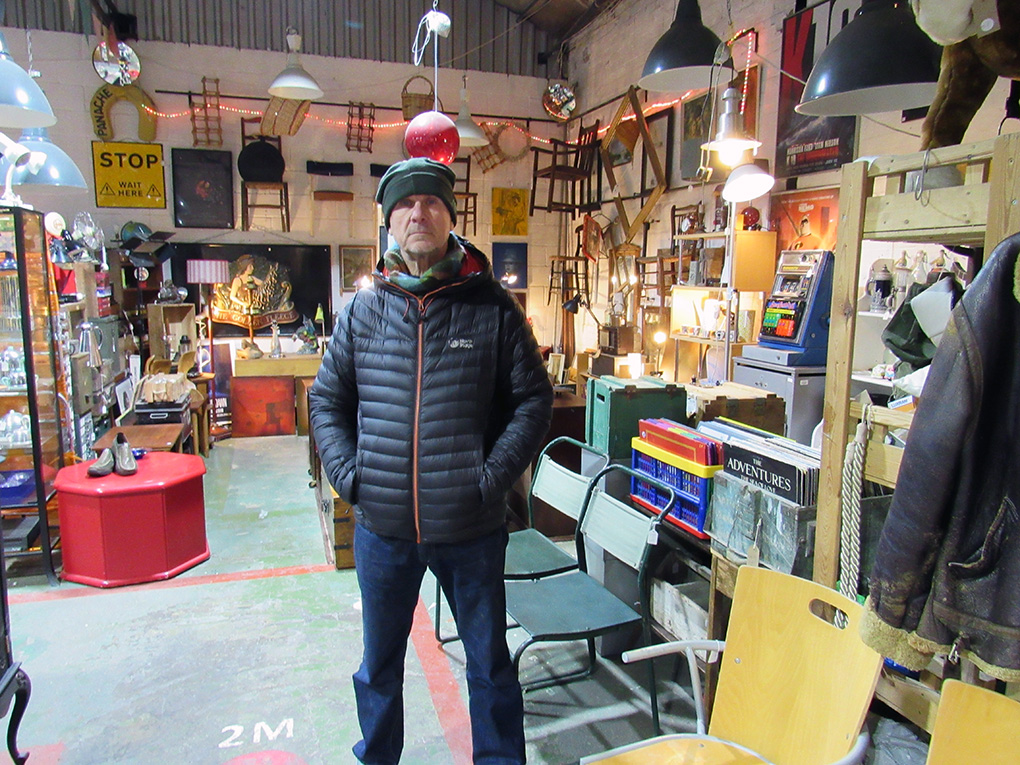In the Christmas run-up, two Cardiff fleamarkets are handling the downturn and offering more than a shopping experience

In Cardiff in 2022, it’s possible to walk down a street and have the whole scene radically change in a matter of months, with yet more multi-storey student flats or offices springing up every day. Yet, in the centre of Cardiff, there’s one building that hearkens back to a much older era, a Victorian industrial warehouse containing five floors of antiques, art, and curiosities, with something for seemingly every taste. But behind the collectibles and the friendly traders, there are some anxieties about how this Christmas shopping period compares to previous years, before COVID-19, the cost-of-living crisis, and the current recession.

According to Ian Cooling, the reserved but polite older man who owns Jacobs Antique Centre, which occupies the building, this Christmas period has been “Noticeably quieter” than previous years. His observations align with data from the house of commons library, which described a decline in overall UK retail sales of 6.2 percent in the three months running up to November of 2022. With the UK in recession, seeing a contraction of 0.3 percent in the third quarter of 2022, businesses have made less profit this year, and small businesses are finding it more difficult to support their overheads. Ian points out that none of his stallholders would be able to afford to run a shop independently. “A lot of the smaller retail shops have gone now,” he says.
Something for everyone
Ian has also been trying to keep his business humming by making sure that Jacobs offers more than antiques; the building also has a cafe, an art gallery, and a rooftop space with views over the city that puts on live music and other events. By diversifying, Ian hopes he can offset the decline in foot traffic for his stallholders. It also means that the space has something more to offer the wider community, as well as being able to support the close circle of traders, all of whom know each other well.
They’ve got the kind of knowledge that you can’t really get just buying something randomly on the internet
“We try and make sure that there’s something interesting for just about everybody in the building,” he says. He’s also a realist when it comes to the necessity of doing business online and engaging with social media, but he’s keen to point out that the stallholders at Jacobs and the real-world, in-person interactions that customers have with them is something unique to being in a brick-and-mortar space. “They’ve got the kind of knowledge that you can’t really get just buying something randomly on the internet,” he says. He also describes it as a social space, where the traders aren’t “fanatical” about making money but are happy to chat to people about their passion.
One of the traders at Jacobs Antiques whose passion is still evident is Anne Gingell, who has had a stall for the last 40 years. In her seventies, with the perpetually shrewd expression of someone who has spent a lifetime appraising things, she describes herself as being “part of the fixtures and fittings round here.” She’s more than happy to talk about opera hats, William Morris, and trends in antique furniture (Edwardian stuff is out, but mid-century is in, apparently). When she describes the space in Jacobs, she says that it’s the old-fashioned charm of the place that remains most appealing to the people that come in. “They see it as quaint, and a bit of a museum,” she says. She’s optimistic about the future for the market though and says, happily, that she’s one of the stallholders there still clinging on to old habits.

A community asset
Across town in Tremorfa, there’s another antiques market with multiple stallholders that makes the community value of indoor fleamarkets clearer still. Hidden amongst the largely council housing of the Tremorfa estate in a formerly disused industrial unit, the Cardiff Indoor Fleamarket has been a boon to an otherwise deprived area. According to the Welsh government’s Index of Multiple Deprivation, the area around the Tremorfa estate is amongst the 10 percent most deprived in the nation. The indoor fleamarket is a hodgepodge of different stalls, selling everything from art to collectibles, records, and furniture.

A stuffed owl sits next to a stack of racy 70’s postcards with dated gags about secretaries and nurses, a large Victorian sun umbrella and, somewhere in this jumble of oddities, Jubs Bowen-Lewis, one of the most established traders on the site. She’s doing alright this festive run-up, aside from the cold in the unit, which necessitates wearing several layers all day. Jubs says she’s seen a “steady flow” of people passing through. However, she has noticed that customers are “being a bit more careful with their money.” “Obviously people are worried about the cost of living- the cost of fuel, and gas, electric, food- everything’s going up,” she says. The upside of this, for Jubs, at least, is that according to her, people are more willing to look for things “pre-loved” that otherwise they would buy new, something she’s keen to point out is also good for the environment.

Dave Webb, a wiry 65-year-old, and proprietor of the “retro and rustic” stall agrees with Jubs that the advantage of buying things like furniture at the market is that it means that people have an affordable alternative to buying new. “If you go to Ikea and buy a flat-pack, it will just last 12 months and fall apart” he says. As someone with a side-line doing irregular work for the Cardiff film industry, Dave also appreciates the flexibility of being able to have the other traders cover his pitch for him on days that he has to be somewhere else, something that the other traders who also work irregularly find useful.
The space benefits from accessibility, with a ground floor layout and disabled toilets, as well as isles wide enough to accommodate wheelchairs. There’s also a cafe, where the traders and customers stop for a bite to eat or a coffee and a chat. Dave says he notices disabled people and their carers often come to the fleamarket because of the convenience.

In an area that’s otherwise only served by a few small shops, without a great deal for disabled people or people on a low income to do, the fleamarket offers a little island in local people can while away an hour or two, buy something useful at a reasonable price, and interact with other people from the area.
It’s the whole reason why such spaces are both useful and beneficial to communities.
Jubs says that the site is doing well, with plans to open up a new hall for stalls in the new year. Even with the downturn then, it’s the people in the antiques business with their knowledge and experience and the inclusivity of the spaces themselves that make them resilient in an otherwise ailing consumer landscape – where the emphasis can seem to be on the price of everything, but the value of nothing.
